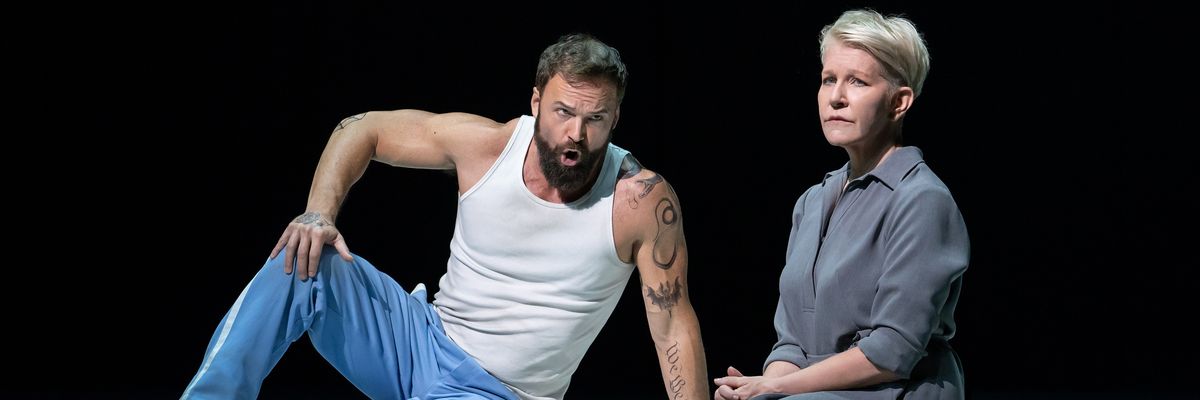Based on our pasts, we—Ryan McKinny and Jamila Hodge—are unlikely allies. One of us got into trouble as a youth, became entangled with the justice system but, coming from a privileged community, received leniency. The other survived violence, and despite negligible support from that justice system, ultimately became a federal prosecutor.
Today, we are an international opera singer and the leader of an organization building new approaches to community safety—in a movement to redefine justice and safety for those who truly lack it. The intersection of the arts and social justice has brought us together.
Today, 2,400 people sit on death row in the U.S. Our society has deemed them expendable and beyond redemption.
Despite years of reform and recognition of the significant racial disparities, and nearly 3,400 exonerations (194 from death row) showing the legal system’s susceptibility to error or corruption, we still have nearly 2 million people incarcerated—and the highest rate in the world.
When curiosity enables us to see ourselves in each other, we can recognize the basic needs we share.
It’s happened through dehumanization: ignoring the qualities, vulnerabilities, and innate dignity of those involved in the justice system and the people they’ve harmed.
The reverse—recognizing the humanity in everyone, asking not “What’s wrong with you?” but “What happened to you?”—is key to evolving from a system rooted in slavery that has inflicted immeasurable harm on families and communities, especially Black and other marginalized people.
This is where the arts and social justice intersect. What we seek together is understanding, both in terms of who we are as human beings and what has the potential to unite us.
When I, Ryan, take the stage next week as Joseph De Rocher, a character sentenced to death in “Dead Man Walking,” it’s most important to portray the “bad guy” as fully human, flawed but also shaped by all that is around him. The hope is to let the audience feel and understand the sweep of human experiences of those touched by capital punishment: those who committed the violence, the victims’ family members, the communities devastated by chronic violence.
The justice system we have, focused solely on punishment, does not have the same aspirations and won’t ever deliver true safety or healing for everyone. Ryan’s friend Terence Andrus was an extreme example of that limitation.
He grew up neglected in a broken home, suffered from psychosis, and experienced extraordinary trauma when he was in juvenile detention. But jurors knew none of that when they sentenced him to death for murders he committed under the influence of drugs. Earlier this year, after learning his appeals had been rejected, Terence killed himself after growing into a person who was an empathetic artist who cared about others.
As a prosecutor, I, Jamila, can’t remember a case that didn’t involve someone without a history of trauma. The near certainty that a person who had caused harm had been harmed convinced me we needed to build a new justice system.
The work required to do this is extraordinary. The dominant narrative around justice—there are good people and bad people, and we punish bad people to protect the good—runs deep throughout our culture.
In reality, though, there are people, and entire communities, that don’t have access to a quality education or good jobs, who can’t afford housing or access physical and mental health care. This deprivation has powerful traumatic consequences—and feeds our prison system. For them, safety isn’t just the absence of violence, it’s the presence of well-being.
We have to envision what our world would be like if we ensured that everyone, regardless of our differences, had access to what they need, if we invested in healing and programs that addressed the root causes of violence.
Leaders in these communities have been building solutions for years now. Baton Rouge, Louisiana, is a model. Community members are working with police to explore trauma and build trust. A team of violence interventionists de-escalates conflict and addresses underlying issues. Grassroots organizations identify gaps in the community and fill them.
Community members want their needs, and their solutions, to be seen and supported because they understand their path to safety.
System leaders must play a critical role, too. Louisiana Gov. John Bel Edwards recently signaled that he understands the causes of extreme violence when he requested the state parole board consider clemency for everyone on death row. It’s an opportunity to explore the humanity of those 59 people, and their ability to change and be redeemed.
Art is the perfect vehicle for helping us recognize the humanity of those who seem separate from us—but it can’t be the only one. When curiosity enables us to see ourselves in each other, we can recognize the basic needs we share. Then we can begin to break down social barriers in the pursuit of healing and build a new system that recognizes our shared humanity, and roots its policies in the essential worth of all people.
But that is just the start. We need to extend our imagination and curiosity into the practical realm. We have to envision what our world would be like if we ensured that everyone, regardless of our differences, had access to what they need, if we invested in healing and programs that addressed the root causes of violence. That’s the type of justice that we could all sing about.
